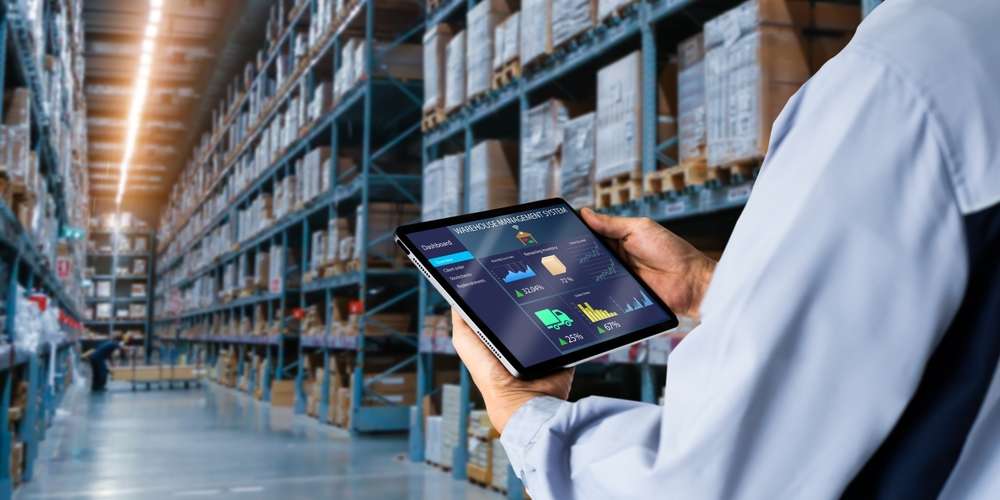Reimagining Inventory Management with Demand Sensing
Inventory optimization has long been a cornerstone of efficient business operations, but traditional forecasting methods often fall short in today's rapidly changing market landscape. Enter demand sensing: a cutting-edge approach that leverages real-time data and advanced analytics to revolutionize inventory management. This article explores how demand sensing is transforming business practices and driving competitive advantage in the industrial sector.

The Evolution of Inventory Management
Inventory management has come a long way since the days of manual record-keeping and gut-feel decision-making. Early methods relied heavily on historical data and simple statistical models to predict future demand. While these approaches served their purpose for a time, they often resulted in inefficiencies, excess inventory, and lost sales opportunities.
The advent of computerized inventory systems in the 1970s and 1980s marked a significant leap forward, enabling businesses to track stock levels more accurately and automate reordering processes. However, these systems still relied primarily on historical data, limiting their ability to adapt to rapid market changes.
As globalization and e-commerce gained momentum in the 1990s and 2000s, inventory management became increasingly complex. Businesses had to contend with longer supply chains, shorter product lifecycles, and more volatile consumer demand. This complexity highlighted the limitations of traditional forecasting methods and set the stage for more sophisticated approaches.
The Rise of Demand Sensing
Demand sensing emerged as a response to the shortcomings of traditional inventory management techniques. Unlike conventional forecasting methods that rely heavily on historical data, demand sensing incorporates a wide range of real-time information to create a more accurate picture of current and future demand.
This approach leverages advanced analytics, machine learning, and artificial intelligence to process vast amounts of data from diverse sources. These may include point-of-sale data, social media sentiment, weather forecasts, economic indicators, and even geopolitical events. By analyzing these signals in real-time, businesses can detect shifts in demand patterns as they occur, rather than waiting for historical trends to reveal themselves.
Key Components of Demand Sensing
Effective demand sensing relies on several key components working in harmony:
Data Integration and Management
At the heart of demand sensing is the ability to collect, integrate, and manage data from multiple sources. This requires robust data infrastructure capable of handling large volumes of structured and unstructured data in real-time. Businesses must invest in advanced data management systems and develop processes for ensuring data quality and consistency across sources.
Advanced Analytics and Machine Learning
Once data is collected and integrated, it must be analyzed to extract meaningful insights. This is where advanced analytics and machine learning algorithms come into play. These tools can identify patterns and correlations that may not be apparent to human analysts, enabling more accurate demand forecasts.
Real-Time Processing and Decision-Making
The true power of demand sensing lies in its ability to process information and make decisions in real-time. This requires not only powerful computing resources but also well-designed decision support systems that can translate insights into actionable recommendations for inventory managers and supply chain professionals.
Continuous Learning and Adaptation
Demand sensing systems must be able to learn and adapt over time. As new data becomes available and market conditions change, the system should refine its models and improve its predictive accuracy. This continuous learning process ensures that the system remains effective in the face of evolving market dynamics.
Benefits and Challenges of Implementing Demand Sensing
Practical Insights for Successful Demand Sensing Implementation
• Start small: Begin with a pilot project focusing on a specific product line or market segment to demonstrate value and gain organizational buy-in.
• Invest in data quality: Ensure that your data sources are reliable and that you have processes in place to clean and validate data regularly.
• Foster cross-functional collaboration: Demand sensing requires input from multiple departments, including sales, marketing, and supply chain. Encourage open communication and data sharing.
• Embrace continuous improvement: Regularly review and refine your demand sensing models and processes to ensure they remain effective as market conditions evolve.
• Prioritize change management: Implementing demand sensing often requires significant changes to existing processes and workflows. Invest in training and support to ensure smooth adoption.
The Future of Inventory Management
As demand sensing technology continues to evolve, it promises to reshape the landscape of inventory management and supply chain operations. By providing businesses with unprecedented insight into market dynamics and consumer behavior, demand sensing enables a level of agility and responsiveness that was previously unattainable.
The integration of demand sensing with other emerging technologies, such as the Internet of Things (IoT) and blockchain, holds the potential for even greater advances in inventory optimization. As these technologies mature and become more widely adopted, businesses that embrace demand sensing will be well-positioned to thrive in an increasingly complex and competitive global marketplace.





